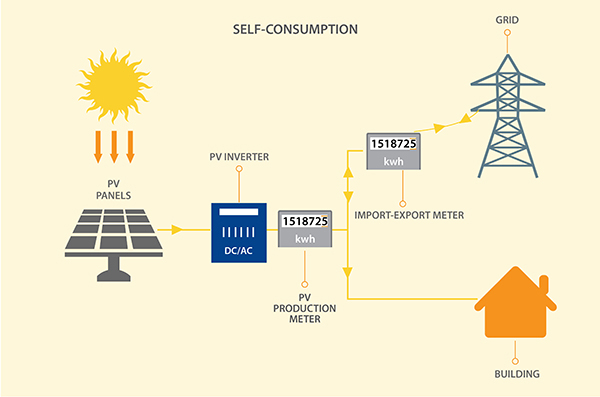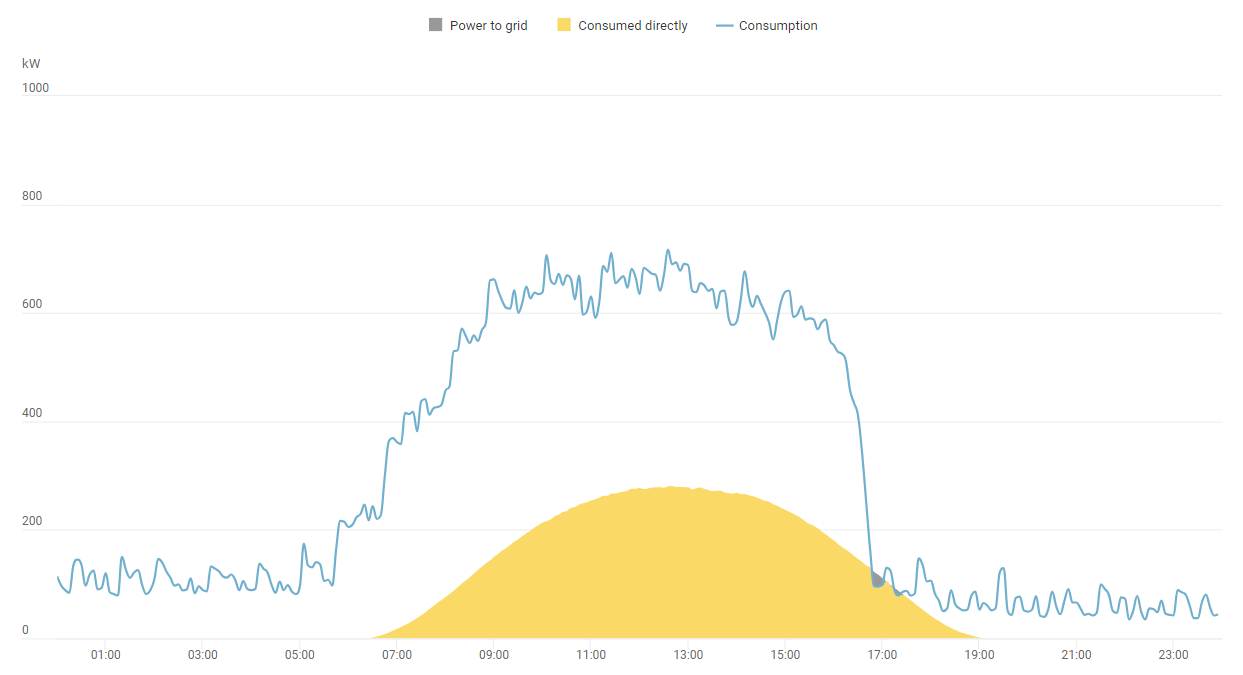NET-BILLING
Net-Billing is defined as the method where the difference in the cost of electricity is calculated (according to the tariff applicable to the consumer) that is imported from the electricity system, and the credit from the selling price of the electricity produced from Res and fed into the grid (according to the purchase price of electricity from RES as determined by CERA for consumers contracted with EAC Supply) for each billing period.
The electricity generated from RES comes from a system located on the roof of the serviced premises or on the ground withing the same plot or adjacent plots to the serviced premises.
Who is eligible to apply for Net-Billing?
This category applies to the installation of renewable energy systems (RES) on the premises of natural (residences) or legal persons (such as commercial and industrial units, public buildings, military camps, schools, agricultural and livestock units, fisheries businesses, etc.) with the purpose of generating electricity for own use.
Where can such a system be installed and how much space is needed?
A Net-Billing PV system can be installed:
- On the roof of legally constructed buildings or on the ground within the same plot and/or adjacent plots to the premises it will serve, in accordance with the provisions of the Minister of Interior’s Decree. Is should be noted that for the installation of a PV system on the ground in a plot of land that contains a legally existing building, a building permit is required for the PV system if the area of the PV modules exceeds twenty square meters (20 m²).
The installation of a RES system on an adjacent plot to the one where the premises and corresponding electricity meter are located will be allowed, provided that there is no other electrical installation on the adjacent plot.
For the installation of a 1kW PV system on an inclined roof using PV modules with dimensions 1.76m x 1.14m, a clear surface area of approximately 5m² is required. Therefore, for the installation of a 20kW PV system, a clear area of around 100 m² is needed.
For the installation of a 1kW PV system on a flat roof using PV modules with dimensions 1.76m x 1.14m, a clear surface area of approximately 10m² is required. Thus, for the installation of a 20kW PV system, a clear area of around 200 m² is needed.
What is the maximum power power that can be installed?
The maximum power of each RES system that can be installed under this category is 8MW per electricity consumption account. Additionally, the power of RES each system cannot exceed 80% of the approved load of the serviced premises, unless a storage system or a power injection control system is installed to manage the energy exported to the grid.

What should be taken into account when sizing a PV system?
To correctly determine the appropriate size of the PV system to be installed, several factors must be considered including the approved load of the premises, the annual electricity consumption, the individual consumption profile of each user, and the estimated energy production of the PV system in the specific area, using simulation software. Proper system sizing is essential to ensure the PV system meets the actual energy needs of each property. With its many years of experience in both PV system design and installation, Petrolina Solar Ltd offers its clients a free, comprehensive study tailored to their energy needs and consumption profile, including all the relevant information needed before installing the PV system.
What is the cost of the PV system and the annual savings?
The cost of the PV the PV system in this category is not fixed in all cases, as a detailed study and design must first be carried out to meet the specific energy needs of each case individually. The Company conducts an on-site visit to each premises to record the necessary data and measurements required for preparing a quotation and for carrying out the study and design of the PV system, free of charge. In the techno-economic study we prepare, we take into account the current network charges as determined by the Cyprus Energy Regulatory Authority (CERA), as well as insurance and maintenance costs of the PV system. Through this study, the financial outcomes are presented, which are useful for the customer to make an informed decision.
What is the method of electricity bill offsetting?
The offsetting of electricity bills is carried out by the electricity supplier with whom the consumer has a contract, either every two months or monthly (depending on the consumer category), over a 12-month period.
In this category, two meters must be installed: one that records the production from the PV system, and another that is bidirectional and records both the energy imported from the grid and the energy exported from the PV system to the grid.
In the case where the exported electricity does not exceed the imported electricity, the consumer will pay the difference resulting from the netting of the exported and imported electricity according to the meter reading applicable to the consumer.
In the case where the exported electricity exceed the imported electricity, the consumer will be credited the monetary amount, for the next billing period, which results from the difference after the netting of the exported and imported electricity.
In the final bill within a twelve-month period, the final settlement of any monetary surpluses will be carried out. The final bill of the twelve-month period is considered to be the bill for which a meter reading was recorded in October or November, unless CERA issues a relevant decision for a different arrangement. In cases where meter readings are taken monthly, the November bill is considered the final bill of the twelve-month period.
Any monetary surpluses cannot be carried over from one twelve-month period to the next, and the monetary amount corresponding to these surpluses will be written off without compensation.
What will be the duration of the contract with the supplier?
The beneficiary will sign a Net Billing Agreement for electricity bills with their respective Supplier, with a duration of 10 years. The contract may be renewed upon its expiration, in accordance with the applicable legal framework in effect at that time.
What is the licensing/approval and operation process of the PV system?
We undertake the entire licensing/approval process for PV systems installed on the rooftops of legal premises or on land up to 20m²., where a legally existing building is present. First, an application is submitted to the EOA (District Self-Government Organization) of each district, based on the title deed, in order to secure an exemption from a building permit (if required). Once this document is obtained, we proceed with the application to the EAC. It is noted that for PV systems over 50kWp, a General License from CERA must be obtained before the application can be submitted to EAC. Upon receiving approval from the DSO, the connection terms are issued. Once these are paid by the customer, the net billing contract is signed, and the project can move forward to implementation.
Upon completion of the installation, the final stage is arranging the inspection of the PV system with the EAC. Once the inspection is successfully completed and the Certificate of Compliance is issued by the EAC, we submit an application to EAC for the issuance of the contract. With the signing of the contract with EAC, the PV system is officially put into operation.
Example of a 500kWp Net-Billing PV system in a factory:

Example of a 500kWp PV system operating under the Net-Billing scheme. This specific PV system is equipped with a smart meter by the company Fronius. The yellow color represents the production of the PV system on a specific day and the consumption of the factory that was covered by the energy produced by the PV system. The blue continuous line represents the factory’s consumption, and the grey color indicates the energy produced by the PV system that was not consumed at the same moment and was fed into the grid.